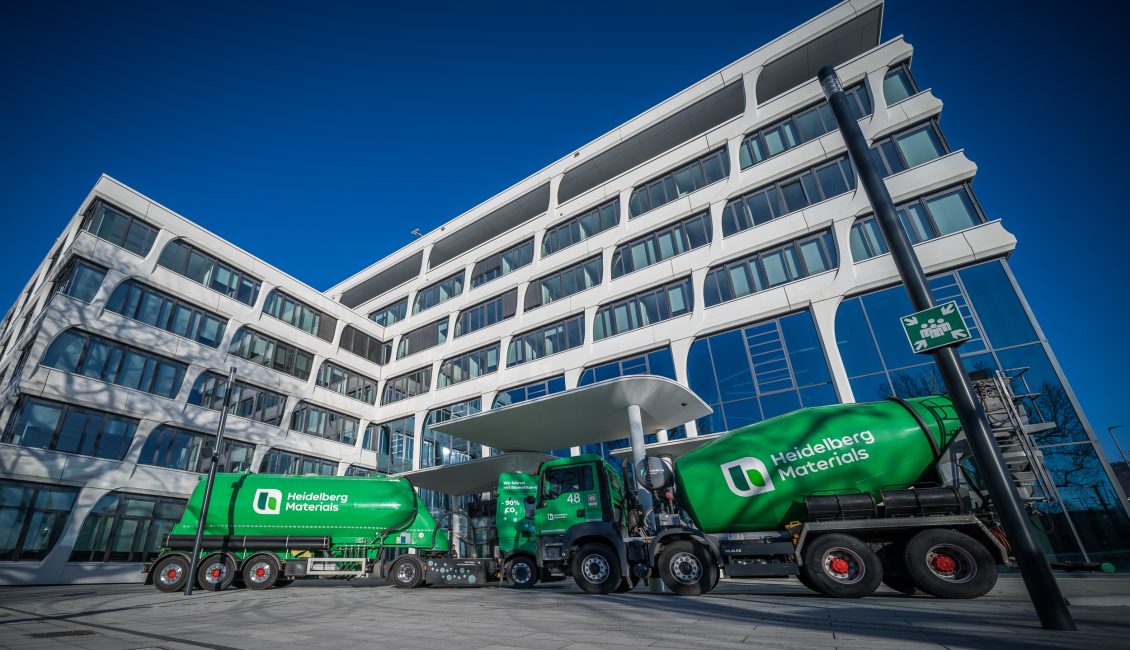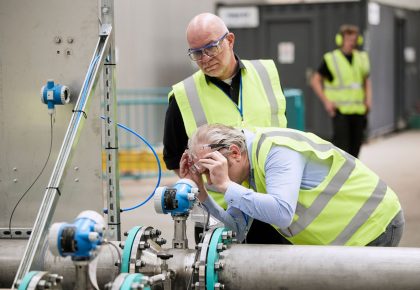
“We closed 2022 with a very good result thanks to a great finish in the fourth quarter,” says Dr. Dominik von Achten, CEO of Heidelberg Materials. “As part of our Customer Excellence Programme, we were able to more than offset the sharp rise in energy costs in the fourth quarter for the first time during the year. Despite the challenging conditions last year, we are on track with all key figures.
We achieved this performance together. My thanks, therefore, go to our 51,000 employees. Without their special commitment and passion, such a development would not have been possible. I look forward to continuing this path with our new global brand and as one team in 2023.
Solid development of operating business
Higher energy and raw material prices had a significant impact on construction activity in 2022 and therefore on demand for our building materials. The negative market dynamics in many of Heidelberg Materials’ key markets led to significantly weaker development of sales volumes in all business lines during the reporting year compared with the previous year.
However, price adjustments in all Group areas more than compensated for this decline in volumes and led to significant revenue growth of +12.7 % to € 21,095 million (previous year: 18,720). On a like-for-like basis, i.e. excluding consolidation and exchange rate effects, the increase was +11.9%. Despite good price momentum and strict cost management, we could not fully offset the sharp increase in energy and raw material costs compared to the previous year. The result from current operations before depreciation and amortisation (RCOBD) therefore decreased slightly by -3.5% to €3,739 million (previous year: 3,875) (on a like-for-like basis: -5.1%). The result from current operations (RCO) decreased by -5.3% to €2,476 million (previous year: 2,614) (on a like-for-like basis: -6.1%).
The additional ordinary result amounted to €-193.2 million (previous year: €481). In the previous year, this mainly included income in connection with the sale of the business activities in the West region in the USA. The financial result improved significantly to €-65.3 million (previous year: -201). The profit for the financial year attributable to the shareholders of HeidelbergCement AG amounts to €1,597 million (previous year: 1,759). Excluding the additional ordinary result and non-recurring tax effects in the reporting and the previous year, the adjusted profit for the financial year rose significantly by €229 million to €1,790 million (previous year: 1,561). Accordingly, adjusted earnings per share increased by €1.56 to €9.47 (previous year: 7.91).
Return on invested capital maintained at a high level
Return on invested capital (ROIC) remained stable in the reporting year at 9.1% (previous year: 9.3%). “Despite adverse conditions and higher invested capital, we were able to maintain our capital efficiency almost at the previous year’s high level,” said CFO René Aldach. “Thanks to our good cash flow, leverage ratio of 1.48x is again below our long-term target corridor of 1.5-2.0x. These are excellent figures that show how healthy the company has developed in recent years.”
CO₂ reduction driven forward at full speed
Heidelberg Materials continues to focus on rapid decarbonization as a contribution to climate protection. Once again, the company was able to reduce specific CO₂ emissions by another -2% compared to the previous year in 2022 to 551 kg per tonne of cementitious material. A lower clinker factor and the significant increase in the proportion of non-fossil fuels were the main contributors to this reduction.
Technologies such as Carbon Capture, Utilisation, and Storage (CCUS) have great potential for the cement industry in the near future on the way to net zero emissions. With a portfolio of already nine innovative CCUS projects on an industrial scale, Heidelberg Materials is further expanding its pioneering role in this field. In Bulgaria, the company has initiated the ANRAV 2022 project, the first full-chain CCUS project in Eastern Europe, which is scheduled to start operations as early as 2028. In Mitchell, USA, around 95% of CO₂ emissions from the cement plant are also to be captured from 2028. With an emission reduction of around 2 million tonnes of CO2 per year, this is the largest CCUS project planned to date worldwide for Heidelberg Materials.
Focus on circularity further expanded
As part of its portfolio optimisation, Heidelberg Materials made particular progress in the area of recycling in 2022. Acquisitions of leading building materials and recycling companies in Germany, the UK, and the USA marked another important step in the implementation of the circular economy strategy. The company is working intensively on innovative processes for the specific processing of concrete parts, their recarbonisation, and reuse in concrete as a building material.
Sustainability targets stronger and more comprehensive
In addition to the climate targets, Heidelberg Materials has also tightened its Sustainability Commitments 2030, the pillars of the company’s sustainability strategy. “The Sustainability Commitments describe our fields of action and focus topics in the area of ESG,” says Dr. Nicola Kimm, Chief Sustainability Officer and member of the Managing Board. “We have made our sustainability targets stronger and more comprehensible. In addition to climate protection and our commitment to the circular economy, we are now focusing even more on topics such as diversity and sustainability in the supply chain.” The Sustainability Commitments comprise ten key targets and are aligned to the United Nations Sustainable Development Goals.
Optimistic outlook 2023
Demand in the construction sector is likely to remain mixed in the current year. The good order situation for infrastructure projects and parts of the non-residential construction sector should offset the decline in residential construction. Cost developments on the energy and raw material markets remain volatile, although energy prices currently appear to be easing somewhat. The focus is therefore on further price adjustments and strict fixed cost management. Heidelberg Materials has made a good start to the year and is optimistic about the further course of 2023.
For the financial year 2023, Heidelberg Materials anticipates further growth in revenue (excluding consolidation and exchange rate effects) and expects the result from current operations (RCO) to be in a corridor of €2.35 billion to €2.65 billion.
Subscribe to our newsletter for special rates to our upcoming events.




